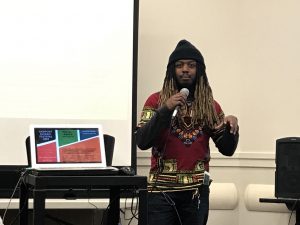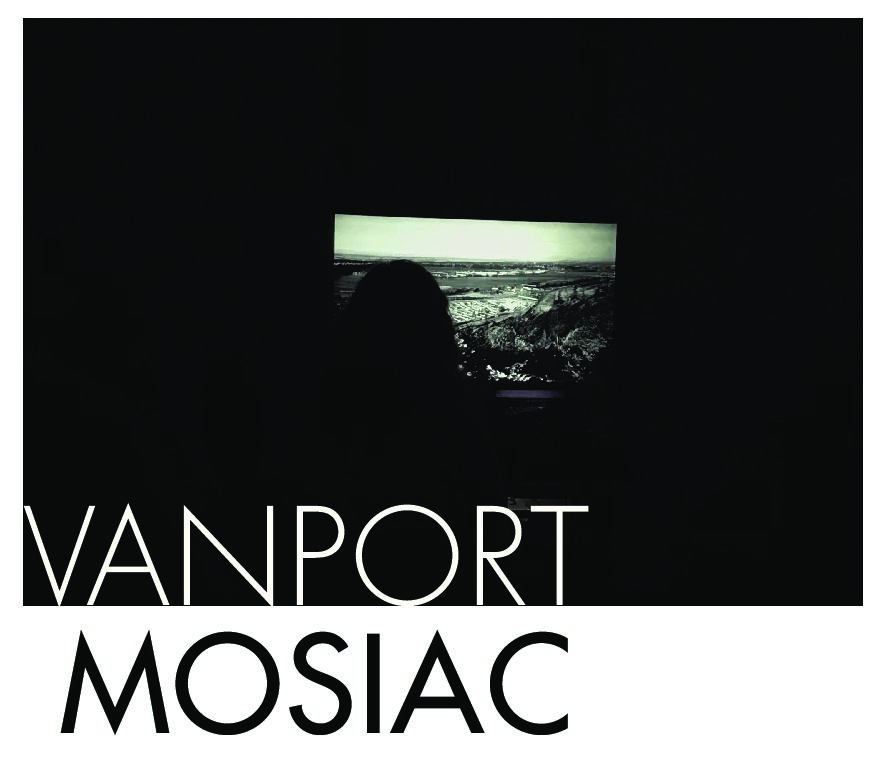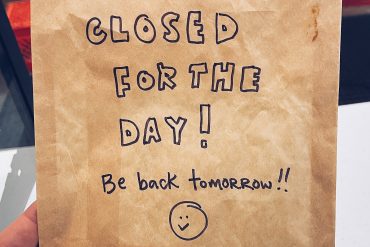Additional reporting by Margo Craig
Vanport Mosaic is a community-driven non-profit working to “amplify, collect, honor, preserve and present the many silenced histories of our region,” said Laura Lo Forti, the organization’s co-founder and co-director. “We are a platform for memory activism,” seeking to prevent collective historical amnesia. On January 12th, the Multnomah County Gresham Library held a screening* of A Place Called Home: From Vanport to Albina, a collection of short films and audio narratives assembled by Vanport Mosaic, that trace the experiences of African-Americans in Portland from the 1940s through the 1970s. “Vanport was a multiethnic, multicultural, multiracial community. So Vanport is an entry point to the many histories that we don’t fully understand, that brought us where we are today,” Lo Forti told the audience.
Vanport was built in 1942 to house low-income shipyard workers. At the beginning of World War II, Portland was one of the major shipbuilding centers in the US. The Kaiser Shipyard Company built Vanport in one year, on a flood plain between Portland and the Columbia River where Portland International Raceway stands today. At the time, Vanport was the second largest city in Oregon and the largest public housing project in the nation. The people that lived there came from all over the country in response to ads seeking shipyard workers. At its peak, in 1945, Vanport housed some 40,000 residents. Many were laid off through the finale of WWII.
By the time Vanport flooded on Memorial Day in 1948, an estimated 18,500 people were living there. The flood is one of the most tragic events in recorded Oregon history. That year, the Columbia River was overwhelmed from heavy snow and rain, but in the days before the flood, Vanport residents were told there was no danger. On the morning of the flood, the Housing Authority of Portland even slid notes under each door, reassuring residents that “Vanport was safe.” A poorly constructed railway dike bordering Vanport broke and the surging river quickly flooded Vanport. At least 15 people died. (Many residents weren’t registered and the number of fatalities could be much higher.)
Lurlene Shamsud-Din moved to Vanport with her family when she was two years old. Her descriptions of the intimate, multicultural community are poignant. “My wish is that people recognize and appreciate that Vanport is a memory. There are people who still carry that memory with them.” The theme to this form of history-telling is the idea of a mosaic. As Shamsud-Din put it: “A mosaic to me is all these pieces and there’s always gonna be something missing and if something gets filled in, some resin, some sand, some something, but there are pieces missing, not a whole, but you can make something beautiful out of that by telling the story.”
Ed Washington, a survivor of the Vanport flood and community liaison for PSU’s Office of Global Diversity and Inclusion, was the first oral history participant in the Vanport Mosaic documentary. He describes watching people streaming out of Vanport on the day of the flood. At first, he said that people assumed they’d be able to return the next day. “I just surmised over the years that we people wanted to go back because that was their home, that was all they had. They didn’t have houses in Albina, they didn’t have houses in Portland, they’re home was in Vanport. When it started filling up, everybody knew, it was over. It was over.”
Thousands of Vanport residents were rendered homeless. Because of racial segregation and redlining by the Housing Authority of Portland, African-Americans were intentionally moved to north and northeast Portland, forming neighborhoods like Albina. Jackie Winters, Former Senator of Oregon, was also featured. She lived in Vanport through the flood. She described how the city handled displaced African-Americans. “Albina became Albina because it was a conscious decision that was made to draw those lines so that we individuals would not move all over Portland, but there was a concentrated area for those coming from Vanport. That was done by design.”
Ben Washington described life in the lively Albina Community, the roles played by the Urban League and the NAACP, and what segregation was like in Portland. “As my mother would always say to me: ‘you can get angry, but you can never hate.’ That has sustained me, because there are many opportunities to hate.”
Myrtle Carr, now 96 years old, moved to Portland in 1945. She began volunteering at the Urban League, and is now considered one of the founders of the Portland chapter. “The Urban League was housed over a restaurant, that stated we cater to whites only. And there was so much prejudice here.” She told a story about meeting Dr. Martin Luther King Jr. when he came and spoke at Benson Auditorium in 1961.
Donna Maxey described what it was like for her family to lose their house, livelihood, and community when the City of Portland razed the Albina neighborhood in the early 1970s for the Urban Renewal Project.
“I was 12, I don’t remember exactly the last thing,” Donna Maxey said. “I remember we all walked through the house and made sure it was empty and kinda said goodbye to the house and cried. It was hard. It was very hard. I had very fond memories of that house and the life that we had there.
“I was born in Albina, I was born in Emanuel hospital in 1949. My childhood was very idyllic, and part of the idyllic-ness has to do with living in Albina. Albina was a wonderful place to grow up. We lived in a beautiful old house. It had hardwood floors, pocket doors between the hallway and the living room, a large dining room with a bulletin, china closets, and the whole yard was lined with boxwood shrubbery and next to the steps was a white camellia bush. And a red camellia bush. And a huge door that had weathered glass panes and crystal doorknob. This was an amazing place, it was an amazing; I dreamt about that home until probably into my 40s. It is not there because we were wiped out by the freeway and Emanuel hospital. It was removed because ‘it was a blighted house.’ and the whole area in Albina was considered blighted. It was very painful when we had to move we lost our home, we lost our church, my dad lost his business—he was a barber—and we lost our community.”
The City demolished the neighborhood to expand Emanuel Hospital and make way for I-5. “How they excavated—I feel like saying excoriated—the community was they forced you to take the money they gave you. And so you had to leave. And to this day, every time I hear the words PDC—Portland Development Commission—it just makes my blood boil. I always like to say Urban Renewal Negro Removal is what it really was. It was very hard to leave the community.”
One attendee named Esther was there with her son. “My uncles—who are now deceased—lived in [Vanport], and they had migrated from Mississippi and Louisiana following, you know, the steel, for jobs, and came and lived there.” She sees her first-cousins in summer family reunions. “When we get together, they talk about how all their family pictures and things were all lost as a result of what occurred in Vanport.”
Helen White and her husband go to Delta Park, where Vanport used to be, to watch their grandson play soccer. “We’ve heard about the flood. We want to learn more…Now, it’s just, like, you don’t have any sense of it having been flooded, or that it would flood now,” Mrs. White said. “There’s no indication, from what we’ve seen, that people died and suffered and lost their homes.” White said that she looked forward to the screening for the oral histories.

The event was moderated by local activist, journalist and artist, Donovan Smith. He touched on what it was like being a black kid growing up in gentrified NE Portland. “A lot of the work that I center myself in right now is based around the thing that we call gentrification. Today, that’s the wording that we give to it, but really, outside of the damage, it’s just black life in general and black life as it pertains to Oregon.” To conclude the event, Smith encouraged the audience to look into several projects, “to get active with the black community in Portland.” Several community-driven projects in the works have a direct links to the Albina neighborhood. The Hill Block Project is a plan to develop a vacant lot on N. Williams Ave. to honor Portland’s African-American community, in a vision proposed by the community. Grassroots organizations and the Urban League are part of this effort. The Albina Vision is a community-led vision for the lower Albina Section next to the Moda Center. “It’s one of the only areas where large scale affordable housing development can happen in this city,” Smith said, “so the community is looking at this and saying OK how can we develop this to be an area that has affordable housing and small business and documentation of the history.”
Black Community of Portland, meets at Rosewood Initiative monthly; how they organize reminds Smith of The Black Panthers.
Smith also mentioned concerns over the Diamond Project, which is an effort to bring major league baseball to Portland and build a stadium in a cargo site, NW of the Fremont Bridge. The construction, Smith said, would be like a continuum of history in that there would be ramifications for minority communities, and representatives of those affected communities are not invited to the planning-table.
*The documentaries centers around the oral histories provided by five people who either lived in Vanport, Albina, or both. The power of this event is in the use of oral histories. A written summary of the event inherently falls short of doing the event, and its methodology of learning history, justice. This article features background information about Vanport and some of the featured speakers in the documentaries. We encourage people to seek out the screening themselves, in order to experience the captivating and heart-wrenching stories as told by those who experienced them.
If people want to learn more and see the event and hear the oral histories for themselves, Vanport Mosaic is hosting two more events at the start of February in addition to their festival at the end of May.
Screening “A Place Called Home: Vanport to Albina”
-Sunday, February 3rd, 2019 at St. Johns Library
-Monday, February 4th, 2019 at Albina Library
Correction: a previous version of this article in print and online said that The Rosewood Initiative is the organization Smith referred to. However, Donovan Smith informed us that the group is Black Community of Portland, and they meets at Rosewood Initiative. Sincere apologies from The Pacific Sentinel Staff, thanks to Smith for bringing this to our attention.





